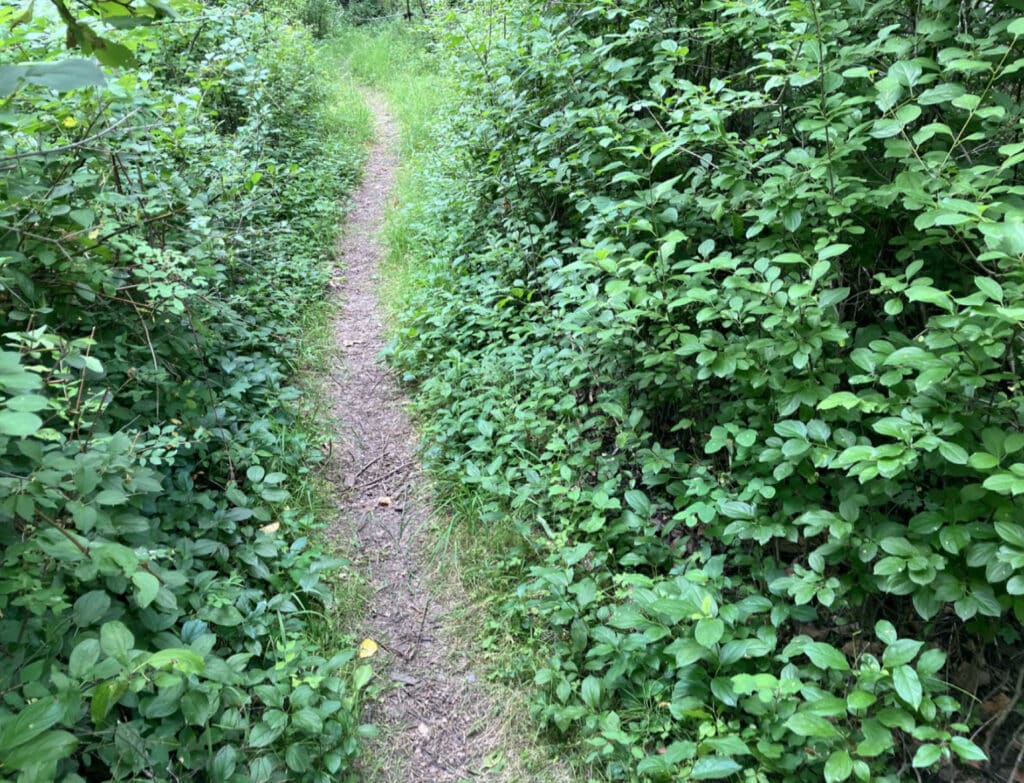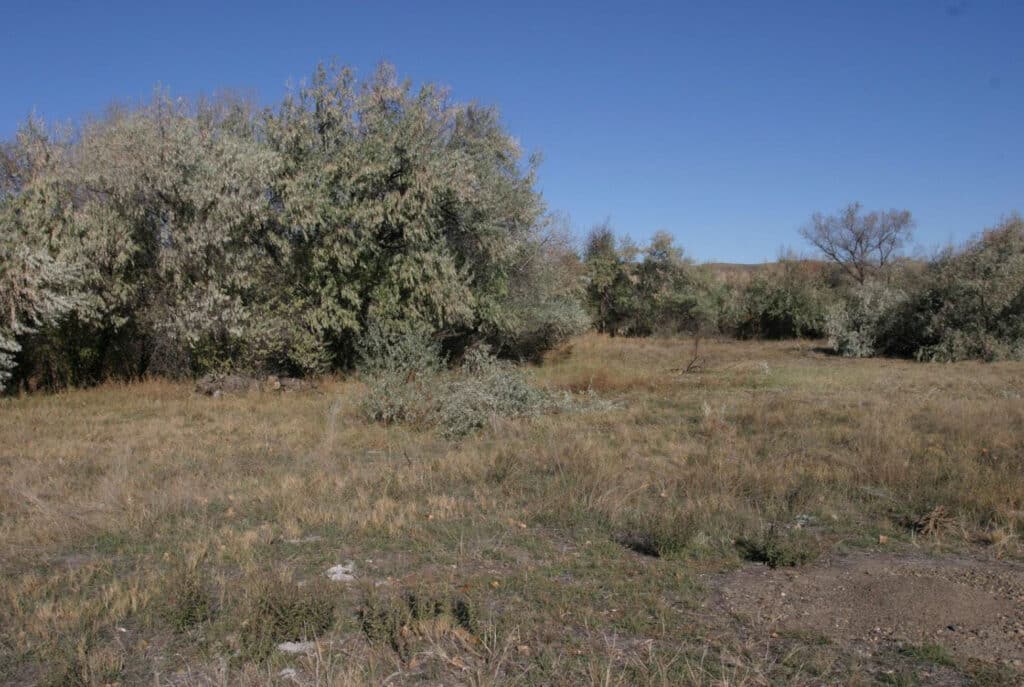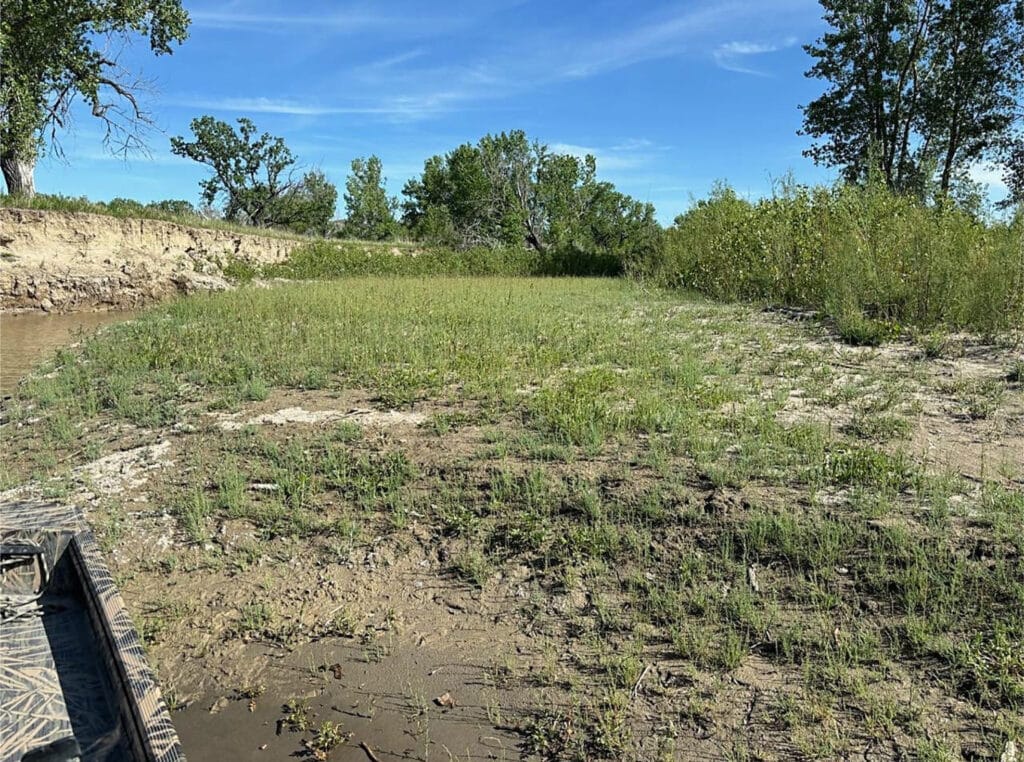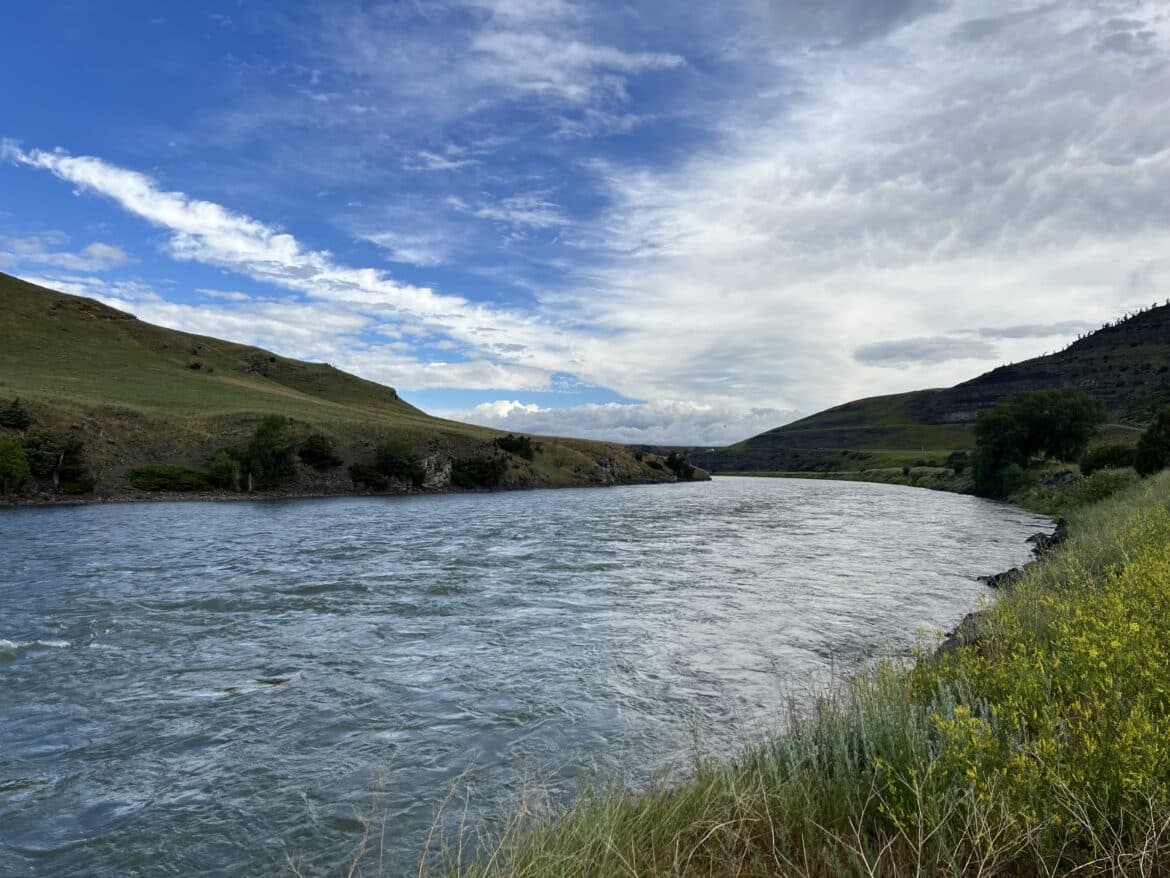Woody invasive species like common buckthorn, saltcedar, and Russian olive harm Montana’s rivers, streams, and wetlands. They can fuel more intense fires, damage irrigation canals, hinder water access, and reduce grazing production. Once established, they form dense stands and are expensive to remove. Producers, like Leroy Gabel from Yellowstone County, know well the risks woody invasive species pose to Montana’s farmlands and the rewarding work of consistent management:
For the past twenty years, my wife Sydney and I have waged a persistent battle against Russian olive on our hundred acres of river bottom pastureland. In the beginning, the land was unusable—choked out entirely by thick stands of Russian olive. Our first offensive was bold but misguided. My father brought in a bulldozer to clear five acres. It seemed like a victory at the time, but we quickly learned the cost. The heavy soil disturbance gave the Russian olive an even stronger foothold. Within two years, the area was as overgrown as before.
We regrouped. With the help of the Yellowstone Conservation District, we took a new approach. We rented—and later purchased—a tree shear that we mounted on our skid steer. This allowed us to cut the trees at their base without disturbing the soil. Paired with targeted herbicide treatment, we finally began to see progress.
For the next five years, we cleared 10 to 20 acres each season. But the work doesn’t end when the trees fall. Sprouts return relentlessly from roots and seeds. We quickly realized that ongoing maintenance was critical. Every year, we sprayed the cleared areas to control regrowth.
After five years, we had transformed the land. Today, that once unusable river bottom supports 30 cow-calf pairs for four months out of the year. It’s productive land now—but the battle continues. Russian olive never truly leaves. Its seeds keep coming, and so does the regrowth. Our fight has become an annual campaign of vigilance and control. But thanks to persistence, strategy, and a bit of stubbornness, we’ve turned back the tide—one acre at a time.
The Gabels highlight an important truth for landowners and producers: you’re not alone. Managers and experts across the state – and often right in your community – are dedicated to helping you identify the best course of action to manage woody invasive species. If you have common buckthorn, Russian olive, or saltcedar, call your weed district, conservation district, or Extension agent for technical assistance.
Montana’s waterways are a shared and treasured resource. We need everyone’s help to protect them from the threats that woody invasive species pose. Whether you ranch, fish, paddle, birdwatch, or forage along our rivers and streams, we ask that you help us by reporting these woody invasive species.
Visit woodyinvasives.mt.gov to learn more about their impacts, how to identify and report these species, and ways to implement integrated management efforts.



Leroy Gabel is a semi-retired farmer from Huntley, MT. Growing up on an irrigated farm, neighboring the Yellowstone River on the Huntley Project, has given Leroy years of valuable experience. He received a B.S. in Ag Education from MSU in 1970. He married Sydney Shaffner in 1972 and began farming the same year. The primary crops grown during the last 50-plus years have been sugar beets, silage corn, malting barley, wheat, alfalfa, and pinto beans. Leroy has been a member of the Yellowstone Conservation District since 2017. Leroy has led a lifetime of service, starting as the State FFA President in 1965-66. He has also been a member of the Billings Chamber of Commerce Ag Committee, Huntley Methodist Church, and Huntley Project FFA Alumni. He has served on various boards such as Yellowstone County 4-H Council, Huntley Project Irrigation District, Montana Water Resources Council, Southern Montana Sugar Beet Association, and Yellowstone County Farm Bureau.
The Woody Invasives Working Group was funded in the 2023 Noxious Weed Trust Fund grant cycle to develop a statewide management plan and educational and outreach materials for common buckthorn, Russian olive, & saltcedar. The Working Group consists of over 200 stakeholders across the state, including staff from local, state, and federal agencies as well as weed districts, conservation districts, academia, and other NGOs. Invasive Species Action Network, a 501c3 nonprofit based in Livingston, has been contracted to coordinate this effort.


